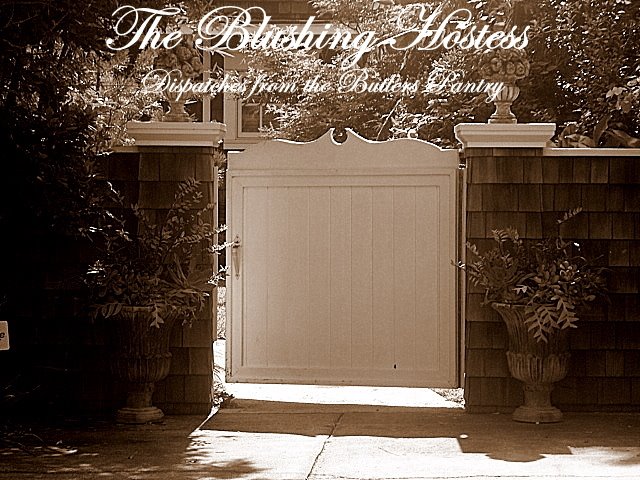But a moment of utter frustration in a restaurant not long ago has once again dropped me off here at the bus station marked, "Teaching children manners to prevent the creation of more ill-mannered adults." You and I are going on little ride. Not because you need it but because reminding ourselves never hurts, and gently prodding others along will prevent them from looking like clods. I think of you and I as a public service of sorts: Increasing respect and mannerliness.
Amy Vanderbilt is kind enough to recount the most valuable first lessons of table etiquette for me as my daughter arrives at her first birthday this month and comes of an age to begin learning guiding table manners. This is nothing too advanced you understand, just the broadest of strokes to get a person by in polite company. These surface-scratching wisdom's however, would have prevented a gentleman (a loosely accurate descriptive) sitting near us in a very swank restaurant from making a negative statement about himself, his respect for the establishment, and (ever-so-important) ruining the tablecloth before him.
I have identified the offending problems in parens:
- Wash your hands before coming to the table (I hope so.).
- Present yourself neatly (Nope, soiled golf shirt, I take issue with the "soiled" part only as this is within the dress guidelines for the establishment.).
- Leave toys, books, and pets behind (Check.)
- Place your napkin in your lap when you take your seat (It remained on the tabletop throughout his meal).
- Sit straight up and do not slouch (well, you could tap everyone for that at times, so let's amend this to: Try to remember to sit up straight.).
- Use manners to ask for dishes to be passed, ie, begin with "please" and end with "thank you" (not applicable to this scenario).
- Do not eat until everyone is served (Nope.).
- Used flatware from the outside in (Used his dinner fork for three courses insisting on hanging on to it on his butter plate, ugh.).
- In American dining, do not place your elbows on the table (He was okay here.).
- Never chew or speak with food in your mouth (Check. And check. Ick.)
- Do not bang utensils on the table (He managed to restrain himself.)
- Your portion of butter is to be removed from the serving plate or bowl with your butter knife and placed on your butter plate (Could not very well spend my whole meal peeking at this person, I will give him the benefit of my suspicions and say he complied.)
- Knives are used for cutting food. A knife is not an eating utensil (He passes!)
- The American method of correct placement of utensils on a plate when you are finished with your meal is as follows: Both the knife and fork are to be placed on the right hand side of your plate: Knife blade facing left or in, and fork tines down. This will indicate to the server you are finished and your plate should promptly be removed (Here is where the most egregious and noticeable issue occurred: The man placed his utensils hanging from the side of the plate. The fork tines on the plate edge and the base of the fork resting on the tablecloth. The knife blade on the plate edge next to the fork, and the base of the knife on the tablecloth. See below.)
I have provided some photos of a basic placesetting. Nothing to confuse the issue here: No soup spoons or fish forks, and the four service glasses are not there either. But keep this in mind as you note how very crowded a piece of real estate at a table could be once dirty utensils on the cloth are added to the mix. Correct placement of utensils at the conclusion of the meal, knife and fork on the right side of the plate, fork tines down, knife facing in:

Grossly incorrect placement, utensils leaning on the tablecloth:
You can guess what happened. He inadvertently went to pick up his wine glass and knocked the utensils from the side of his plate and soiled utensils met the tablecloth. In a private home, this will mean an endless and usually fruitless task for the hostess trying to remove a red wine reduction from her Mother's Irish linen tablecloth. Inconsiderate and unacceptable.
Secondly and perhaps most importantly the first rule of food service is to serve from the left and take from the right. Turning your knife blade in prevents the blade from making contact with a servers hand. To my mind it is as crucial as handing a scissor to another person by the handles. It is a polite and safe habit.





No comments:
Post a Comment